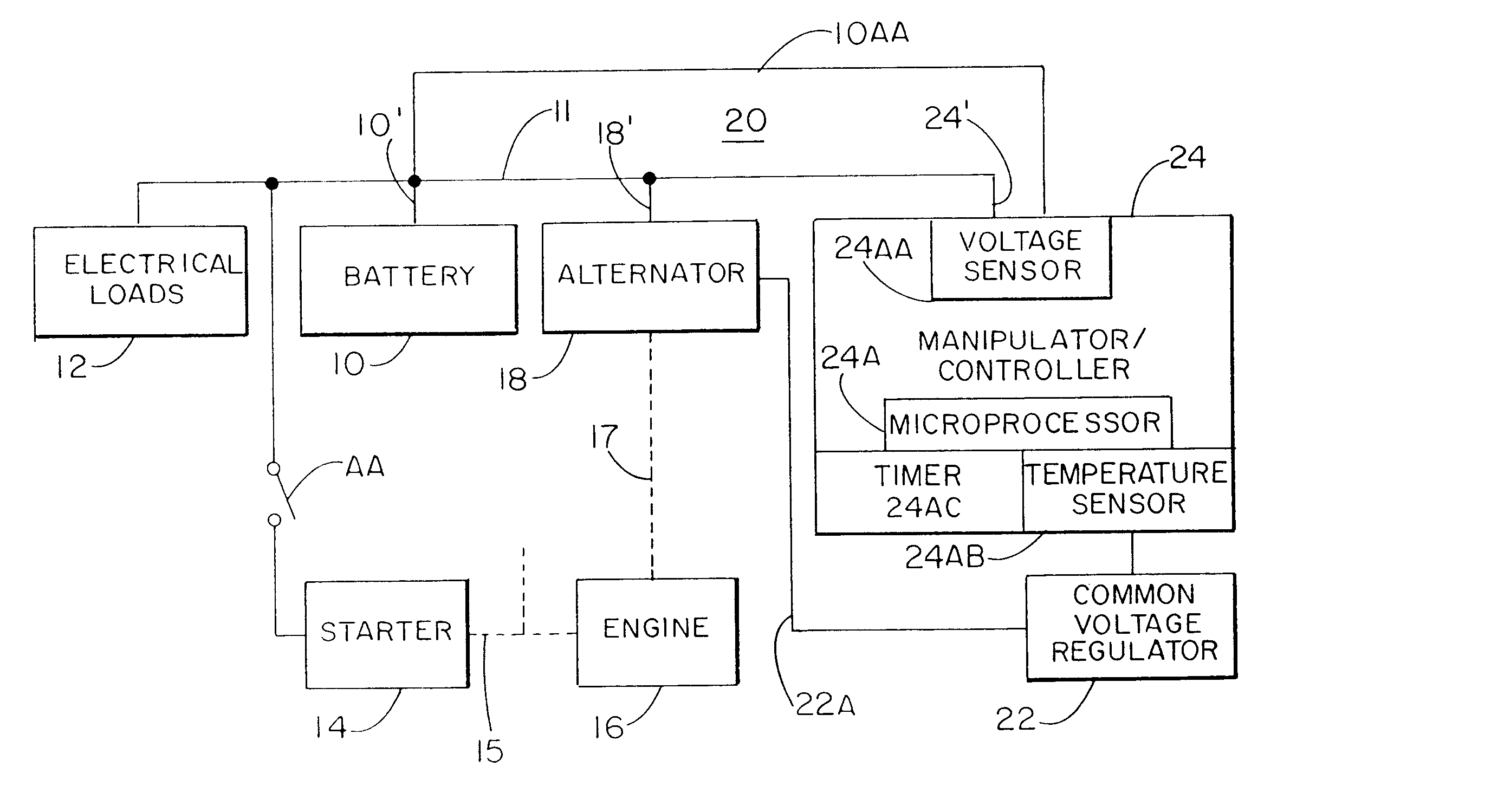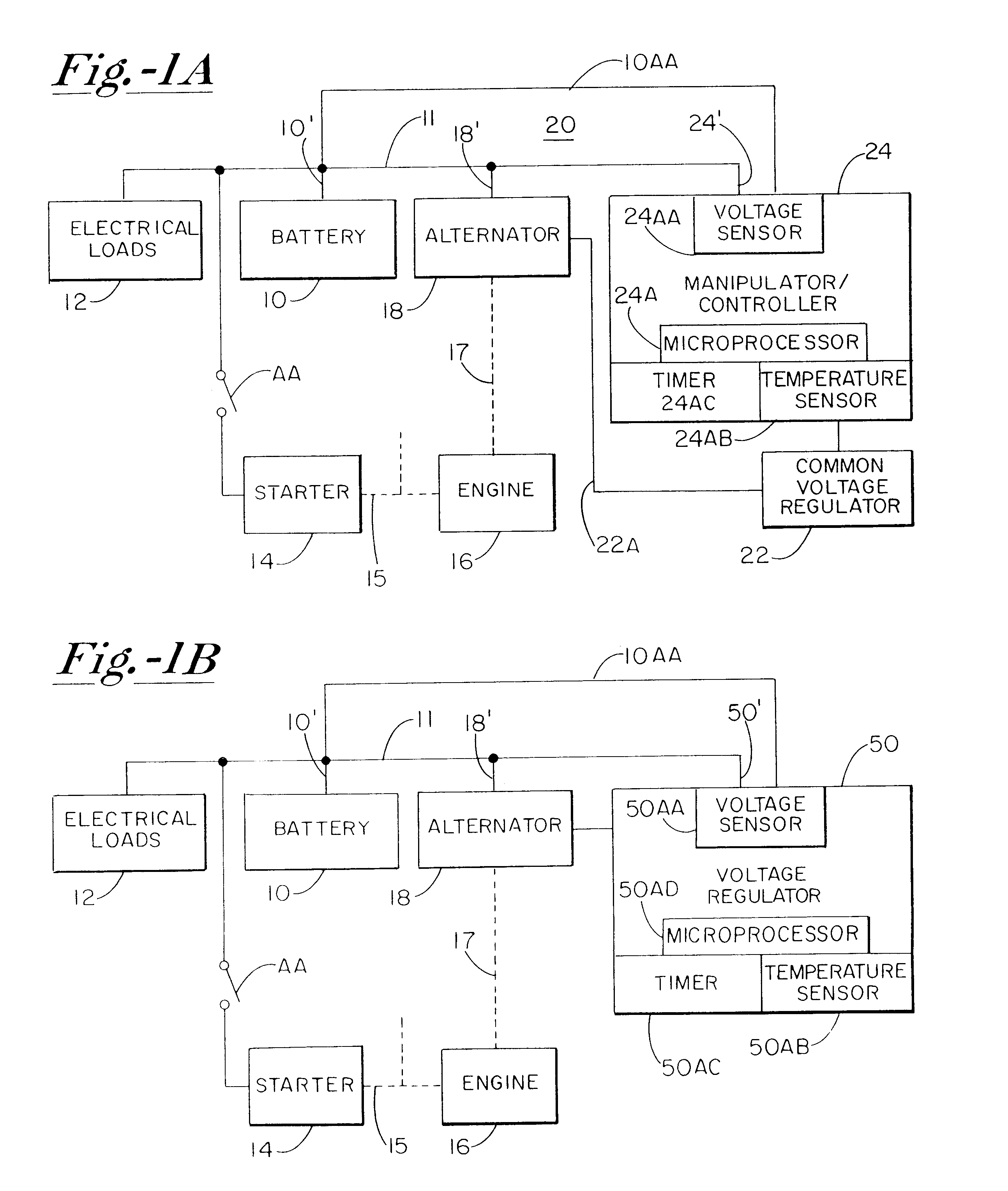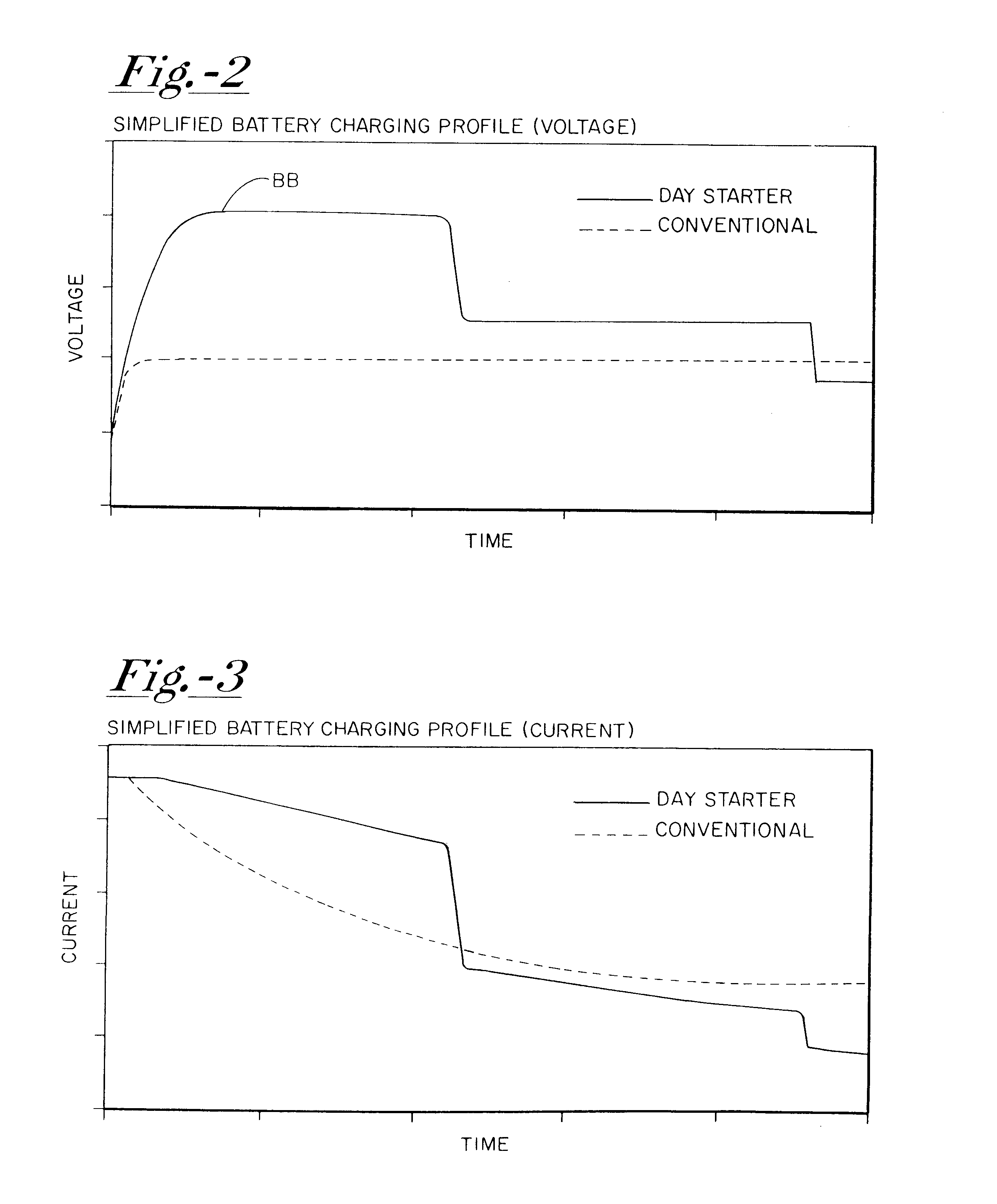Battery charger apparatus
a battery charger and charger technology, applied in the direction of charging/discharging, charging maintainance, electric vehicles, etc., can solve the problems of water use, reduced battery life, and difficulty in having one optimal voltage setting for all conditions
- Summary
- Abstract
- Description
- Claims
- Application Information
AI Technical Summary
Benefits of technology
Problems solved by technology
Method used
Image
Examples
Embodiment Construction
Referring to FIG. 1A, one embodiment of the '541 invention is shown in schematic block diagram form, and comprises a rechargeable battery 10, a plurality of electrical loads 12, a starter motor 14, an engine 16, and an alternator 18. The battery 10 is connected by 10' to a DC bus 11 to supply a plurality of electrical loads 12, as well as to selectively energize the starter motor 14 upon closing of the ignition switch AA. The starter motor is mechanically linked by 15 to the engine 16, the engine further, when operating, causing the rotation of the alternator 18 through the mechanical linkage 17. The invention further includes a voltage regulator 22 and a special manipulator or controller 24 provided by this invention. The voltage regulator 22 may be of any of the several commercially available voltage regulators in widespread use, or a voltage regulator incorporating the present invention's controller technology as disclosed in FIG. 1B. The controlling output for the alternator fro...
PUM
 Login to View More
Login to View More Abstract
Description
Claims
Application Information
 Login to View More
Login to View More - R&D
- Intellectual Property
- Life Sciences
- Materials
- Tech Scout
- Unparalleled Data Quality
- Higher Quality Content
- 60% Fewer Hallucinations
Browse by: Latest US Patents, China's latest patents, Technical Efficacy Thesaurus, Application Domain, Technology Topic, Popular Technical Reports.
© 2025 PatSnap. All rights reserved.Legal|Privacy policy|Modern Slavery Act Transparency Statement|Sitemap|About US| Contact US: help@patsnap.com



